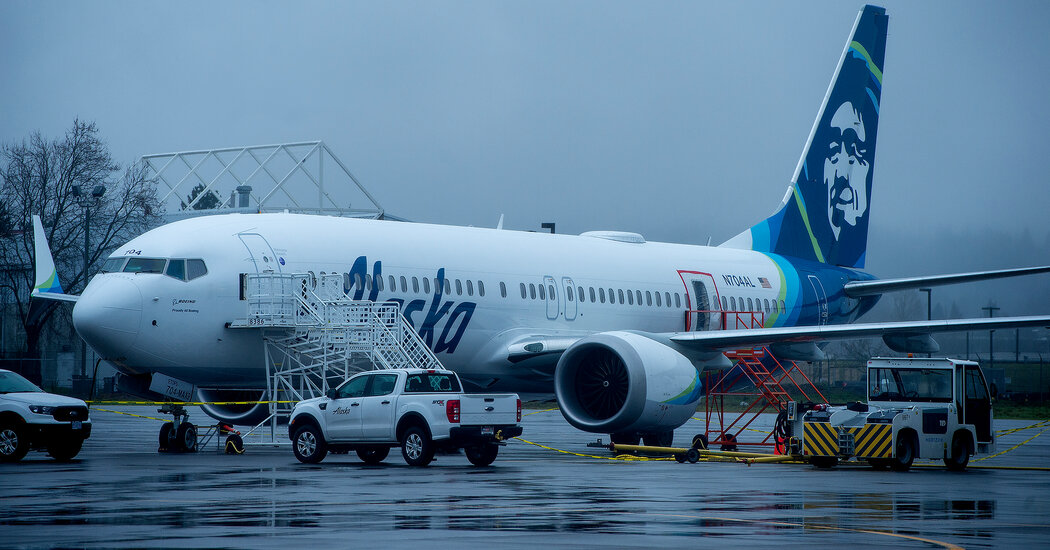Investigators have identified several questions as they try to get to the bottom of what caused a part of a Boeing 737 Max 9 plane to be blown out in midflight on Friday, including about how a critical component was installed. Their work is expected to carry on for weeks.
The questions also include whether Alaska Airlines, which operated the flight from Portland, Ore., appropriately handled pressurization warnings aboard the plane, including two in the two days before the blowout. The investigation, led by the National Transportation Safety Board, is also focusing on the installation and inspection of the piece of the plane that was ripped out — a plug where an emergency exit door would have been if the jet had more seats.
“I think investigators are going to be focused on the manufacturing process of this particular airplane,” said Jeff Guzzetti, a former investigator for the N.T.S.B. and the Federal Aviation Administration. “How was this door plug installed or who installed it?”
The door was initially installed by Spirit AeroSystems, which makes the body for the 737 Max and other aircraft. Investigators said they were looking into whether any work had been carried on the door or in that area of the plane since it entered service in November.
United Airlines said on Monday afternoon that it had found some loose bolts in door plugs on its Max 9 planes during preliminary inspections that began over the weekend. The airline said it was still waiting for final F.A.A. approval of the process to begin required inspections.
The airline said it had carried out its own inspections on most of its Max 9 planes, a process that involves removing two rows of seats and a “sidewall liner,” since Saturday. Each inspection involves five United technicians working for several hours.
Jennifer Homendy, the chairwoman of the N.T.S.B., said investigators had a great deal of work to do, including inspecting the plug, which was recovered from a backyard in Portland. The board will also examine a plug that remained intact on the other side of the plane, interview flight crews and passengers, review maintenance records and repair logs, and conduct laboratory analyses of parts from the plane.
Investigators are also likely to look into whether the installation of wireless internet equipment on the plane by a contractor, AAR, between Nov. 27 and Dec. 7 played any part in the pressurization problems, which emerged after that work was complete. In a statement, AAR said on…
Click Here to Read the Full Original Article at NYT > Travel…
